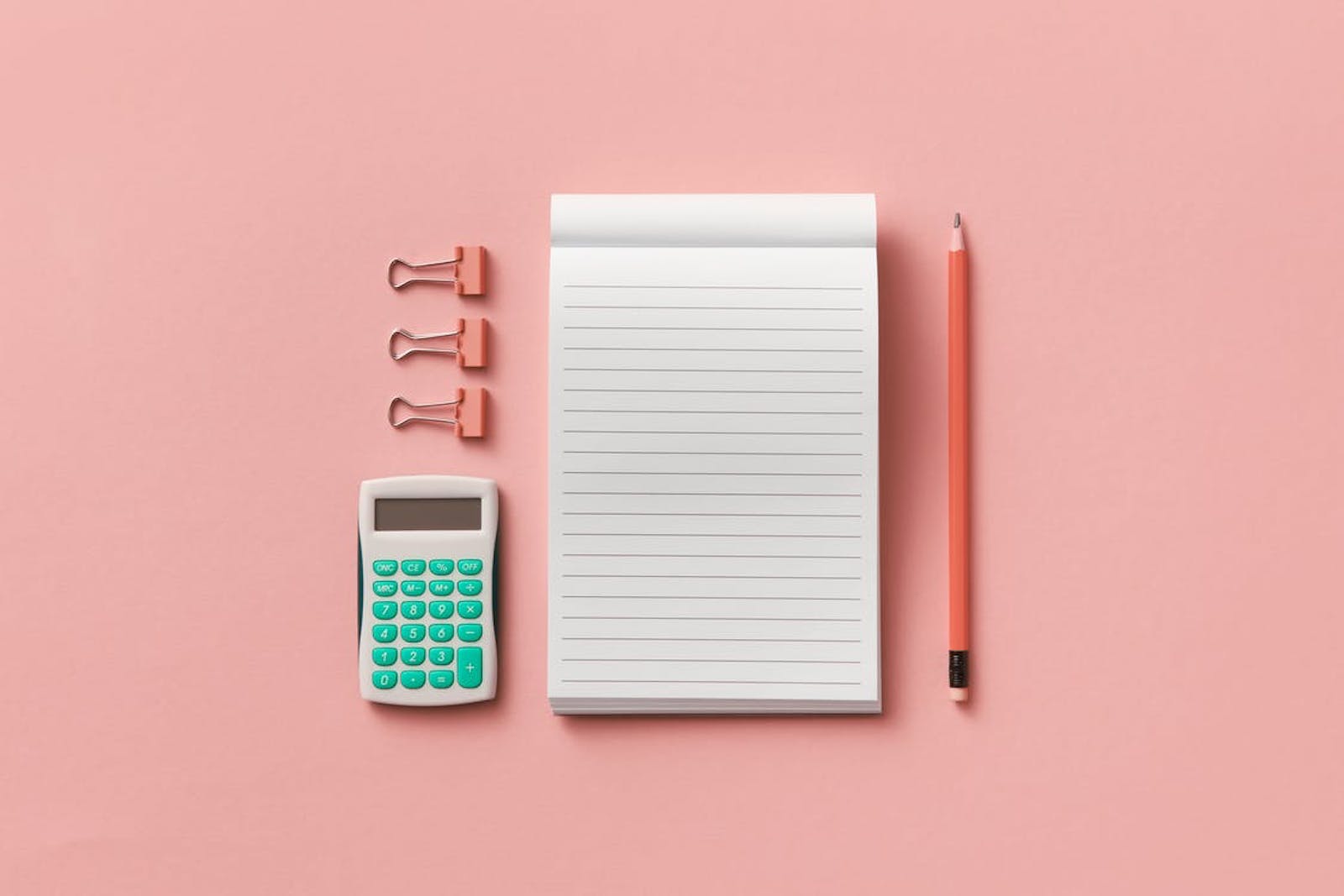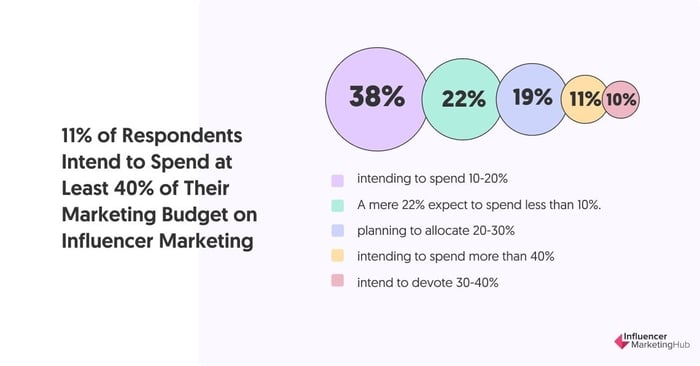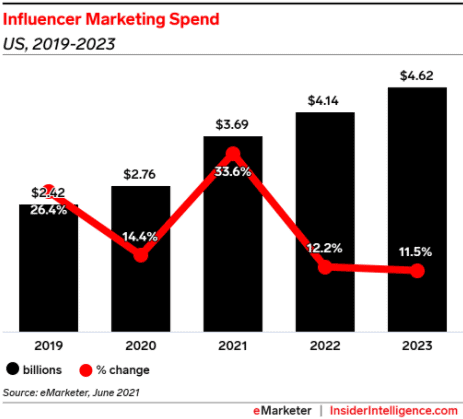Influencer Marketing for CPG: 5 Tactics Every Brand Should Try
Consumer brands are under pressure to squeeze more from their influencer campaigns. Below are five proven CPG influencer marketing tactics for brands...
Need to budget for influencer marketing? This post breaks down how to set a smarter influencer marketing budget to meet your brand's goals in 2024 and beyond.


Struggling to settle on an influencer marketing budget for 2024? You’re not alone.
Most of our team comes from an agency background. We’ve seen so many brands pivot away from other channels in favor of creator-based campaigns and influencer ads.
Meanwhile, new data says that 87% of brands will maintain or grow their influencer budgets in 2024.
The data above reflects exactly what we’ve seen firsthand. That is, more and more consumers flocking to TikTok and Instagram in search of their next purchases.
Not to mention brands revamping their paid strategies with influencer and user-generated content.
Of course, doing all of the above requires a budget. Below is our comprehensive breakdown to help you figure out how much to spend on influencer marketing so you can plan for 2024 and beyond.
(If you want to jump directly to our explanation of how much to pay influencers, click here! 👈)
Skip to Section 👇How to Budget for Influencer Marketing Campaigns |
If you’re ready to set your 2024 influencer budget but don’t know where to start, we can help.
Because we get it — budgeting for influencer marketing campaigns is super daunting. There are so many questions to answer before you even start looking for creators. This includes:
Oh, and how do you justify your influencer budget and explain the ROI to your boss?
Thankfully, our budgeting guide answers all of the above and more!
Let’s start by digging into the three approaches to running an influencer campaign:
Based on your approach, you can draw up a budget that makes sense.
Many companies try to manage their influencer marketing campaigns completely in-house. The do-it-yourself approach is popular with small businesses and up-and-coming brands trying to stay lean.
Let’s say you’re willing to put in the work on your own. For starters, you’ll need a team member with the bandwidth to manage the process. This includes:
Another hurdle with the DIY method is that there’s no guarantee your prospects will actually post.
With no obligations, influencers can drop off at any point in the process.
But if you have a tight budget and the time to coordinate each and every influencer, you can make this option work on a small scale.
Investing in an influencer database is an option for brands ready to scale beyond the DIY way.
Many platforms aggregate influencers across industries and provide a channel for brands to conduct outreach and hire creators themselves.
Databases make it easier to hone in on potential partnerships from people who want to be approached by brands. This increases your success rate during outreach.
But you’re still investing in something that’s not exactly guaranteed.
How so? Well, instant access to creators is a massive time-saver in theory. While influencers from databases should be vetted, this unfortunately isn’t always the case.
Databases definitely can save you time when finding and vetting influencers. That said, conducting outreach at scale can turn into a full-time job. Getting your money’s worth means being consistent and proactive about building relationships.
If your company has outgrown the in-house approach but can’t commit to an annual contract, there is a third option: a scalable influencer marketing platform.
These platforms do the legwork of matchmaking and managing relationships for you.
This approach allows for influencers to post quickly, efficiently and on their own terms.
As an added bonus, your influencers are empowered to create content they believe will perform best with their followers. Since they built their own following from scratch, you can trust their judgment.
This approach is ideal for:
If you’re willing to sacrifice a bit of creative control, the time savings can be huge here.
For example, Statusphere's platform results in about 70 hours saved per 30 influencer posts for our brands. That's partially because our matchmaking algorithm and vetted creator network eliminate all tasks related to outreach, negotiation and managing creators. Since we use 250+ unique first-party data points for matchmaking, we ensure that brands only partner with relevant influencers.
So, the big question: what’s it all going to cost?
Influencer campaign budgeting is tricky because there's an overlap between the benefits of creators and the rest of your marketing campaigns. For example, consider how influencer marketing:
Identifying this overlap in your marketing activities can help you squeeze more out of your budget. Doing say can likewise reduce your marketing spend elsewhere. This is especially true with paid ads.
The simplest way to budget? Dedicate 15% of your marketing budget to paid influencer partnerships.
A recent industry survey says that 38% of brand managers plan to allocate between 10% and 20% of their budgets to influencer marketing. Meanwhile, a combined 78% of brand managers look to allocate 10% or more.
And so with 15% of your budget earmarked for influencers, you’re in good company.

Source: Influencer Marketing Hub
Meeting in the middle means you’ll have the bandwidth and resources for additional campaigns. Still want to invest in paid social or retargeting ads? Go for it!
Keep in mind that budgeting for influencer marketing is about more than just dollar figures and percentages, though.
That’s because what you end up paying your influencers doesn’t factor in the investment of time required to get your campaigns up and running. Finding, vetting and managing influencers is a massive time-sink if you’re doing it all yourself.
Now, let’s dig deeper into monetary costs and how to calculate a monthly budget for each of the three approaches we just talked about.
The main consideration for in-house influencer campaigns is how to pay an influencer.
If you’re planning to perform influencer outreach consistently, we recommend factoring influencer compensation into your budget.
We find that most micro-influencers will ask for between $50 and $250 for one-off posts ($150 on average). They'll also ask for free products for their time.
This number varies from creator to creator, though, in addition to how many content requirements you’ve requested. Speaking with Statusphere team members with firsthand experience as influencers, lower-end payouts can range anywhere from $0 to $300. On the higher end, influencer payments can extend up to $1,000+.
Having experimented extensively with the DIY method, we find it takes about 2.3 hours to secure one influencer post. That's being generous, too. This time spent includes searching for, messaging with and shipping products to influencers.
If you’re planning to only gift products in exchange for posts, go ahead and double your monthly hourly budget. Trust us: you’ll need it.
Statusphere team member and micro-influencer Alexa Groat said of gifted campaigns:
“When accepting gifted collaborations, I think of the value of the product (if it’s a well-known brand or if it is a product I am very interested in and would otherwise buy on my own) as well as a low amount of posting requirements.”
Unless your product has a high dollar value and you’re keeping your posting requirements to a minimum, you might want to budget for some monetary compensation as well in order to increase your odds of successfully landing partnerships.
Most influencer databases require an annual contract. You’ll need to factor this into your budget (on top of what you plan to pay influencers).
Databases can cost anywhere between $750 and $2,000 per month to access.
Another consideration here is the salary of a full-time, in-house team member to manage influencer outreach. After all, why pay for database access if you’re not going to use it to the fullest?
Note: you could potentially outsource influencer outreach to a contractor to save cash, but at that point you might as well hire a dedicated team of experts to help.
Again, databases are useful but many are far from scalable.
Influencer platforms will typically use a cost-per-influencer-post pricing model. In the case of Statusphere, our brands pay for a specific number of guaranteed posts on an ongoing basis.
Post costs can vary depending on factors such as:
You can expect to pay a scalable influencer platform between $100 and $300 per post for micro-influencers. This includes influencer compensation and shipping costs.
The cost of influencer marketing is a combination of time and money spent. Again, we estimate about 70 hours saved per 30 influencer posts. Since scalable influencer platforms are largely hands-off, you get the benefit of great content without sacrificing your schedule.
And because high-quality content is guaranteed, you reduce your influencer marketing cost and earn a greater ROI long-term.
No big surprises here — influencer marketing budgets are on the rise.
A recent forecast by eMarketer predicts that influencer spending will break the $4 billion mark this year, marked by a 12.2% increase throughout 2022.

Source: eMarketer
This isn’t a passing trend, either. Increased spending on influencers has been consistently on the uptick and won’t slow down anytime soon.
Consider that 57% of industry professionals planned to up their influencer marketing budgets in 2020 — that number then jumped to 71% in 2021. Also notable was the fact that brands claiming they weren’t increasing their influencer spend slashed in half from 2020 to 2022 (61% to 29%).
Translation? Not only are brands spending more on influencers than ever before, but those that invest in creators tend to stick with them long-term.
This signals the ongoing value of always-on influencer marketing campaigns.
The short answer? Creator campaigns have proven effective time and time again.
Beyond the data above and what we’ve seen from our own members, consider the proven benefits of working with influencers including:
Also, note how Instagram and TikTok are adapting to embrace the growth of influencer marketing. Both platforms implement new business features. This includes the ability to run creator-based ad campaigns via influencer whitelisting and allowlisting.
To wrap things up, let’s review the importance of picking the right types of influencers for your brand.
Many critics still think of influencer marketing as shelling out for a celebrity to make a random post about your product.
The reality, though? That’s far from the truth. Besides, celebs aren’t ideal for most influencer campaigns (unless you’re a massive brand with a bottomless budget).
There’s a reason why brands are working with micro-influencers on a larger scale versus one-off celeb campaigns. Not only does the cost of influencer marketing go down when you work with smaller creators — the results are bigger.
Heck, we’ve seen it firsthand. Consider below:
These stats highlight both the value of working with smaller influencers and why they’re perfect for most brands. With a micro-influencer platform like Statusphere, you can work with authentic creators at scale to maximize the results from your content.
If you’ve been working without a dedicated influencer budget or don't know what to do with the one you have, we totally understand the struggle!
From debating how much to spend on influencer marketing to scaling high-quality content and beyond, there’s so much to wrangle.
That’s where Statusphere comes in. Our platform matches brands with creators based on over 250 data points to generate authentic content at scale.

From fulfillment and analytics to content rights and sourcing content, we offer a comprehensive control center for your creator campaigns.
Want to learn more about how our platform works? Contact one of our experts to see how we can help you maximize micro-influencer campaigns in a fraction of the time.
This article was first published in October 2020. It was last updated on May 1, 2024.

Consumer brands are under pressure to squeeze more from their influencer campaigns. Below are five proven CPG influencer marketing tactics for brands...
Looking for TikTok influencer marketing examples? This post breaks down ten awesome campaigns and ideas to inspire brands working with TikTok...
Is influencer marketing the key to taking back your schedule? Here’s how influencer marketing automation software can save brands 100+ hours per...
Be the first to know about the latest tools, trends and strategies in influencer marketing for brands.